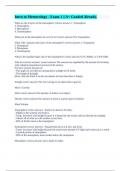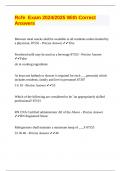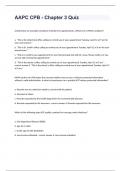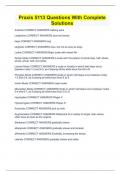Exam (elaborations)
Intro to Meteorology - Exam 1 || A+ Graded Already.
- Course
- Institution
What are the 4 layers of the atmosphere? correct answers 1. Troposphere 2. Stratosphere 3. Mesosphere 4. Thermosphere What part of the atmosphere do we live in? correct answers The Troposphere What "lids" separate each layer of the atmosphere? correct answers 1. Tropopause 2. Stratopause ...
[Show more]












